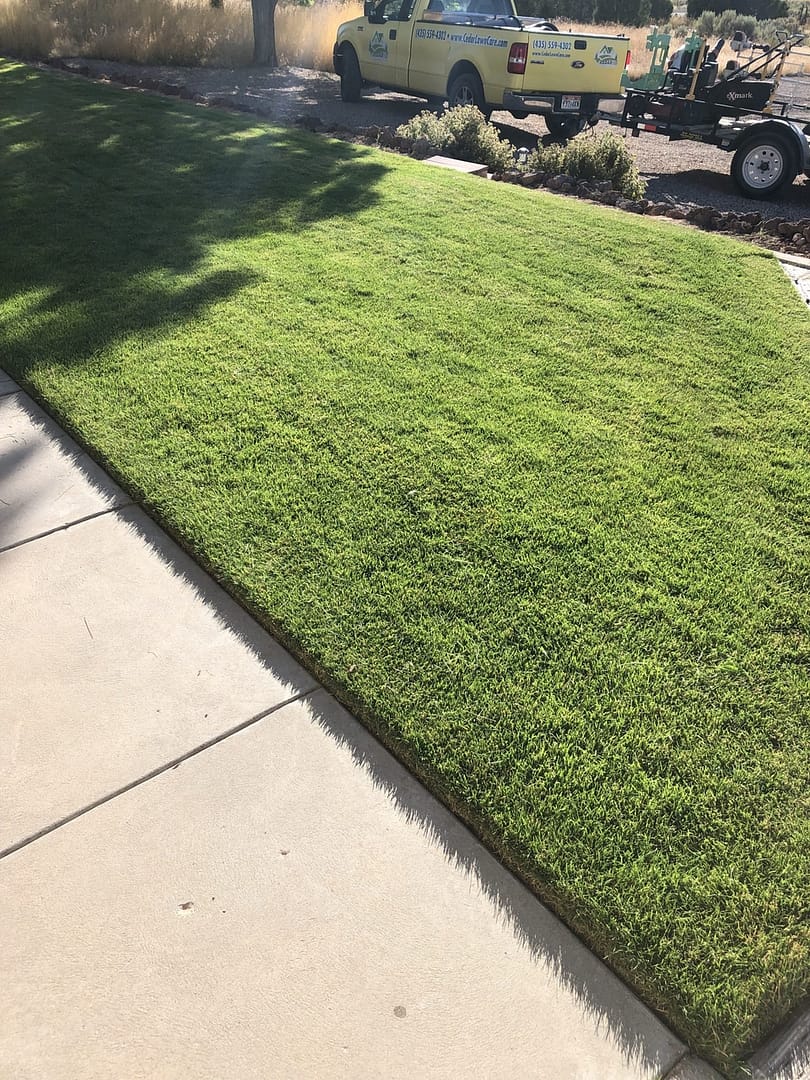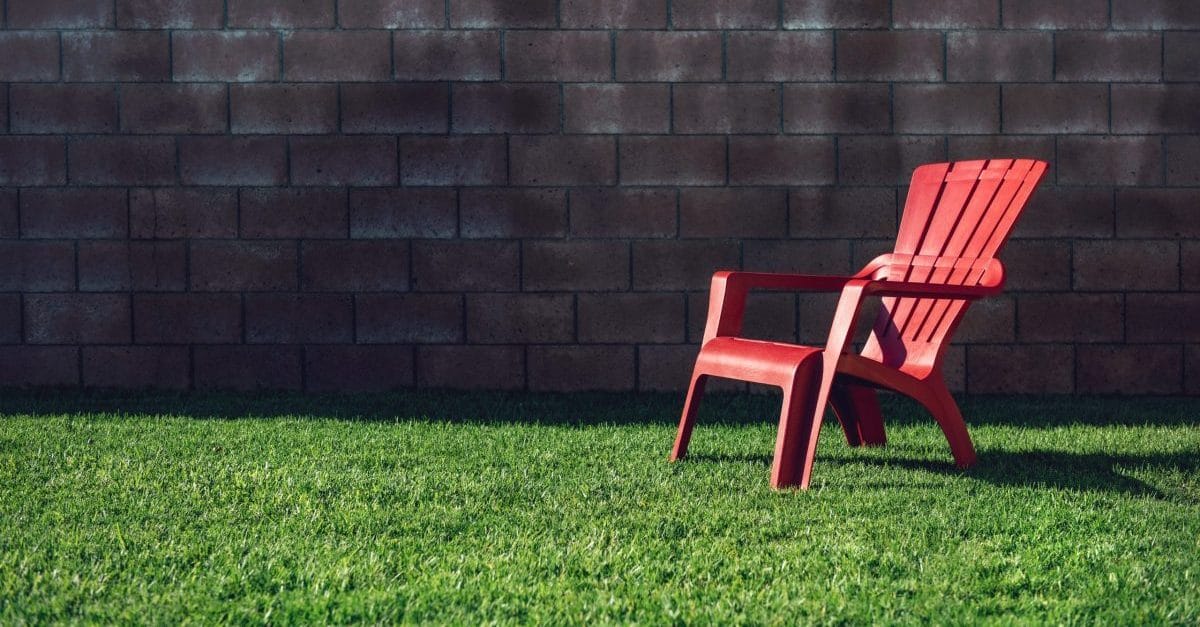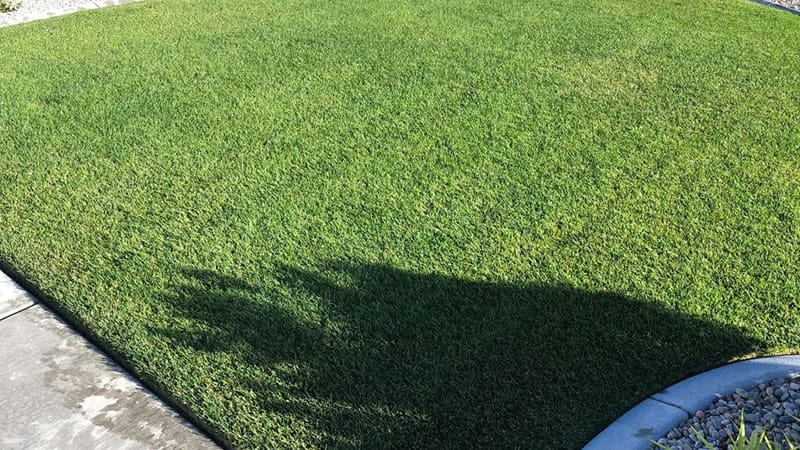Taking the Guesswork Out of Lawn Care: A Yearly Guide
Most homeowners know the basics of lawn care, they know they need to water it and mow regularly to keep it looking nice. But learning the other components that go into a well-rounded lawn care routine may feel daunting. Here we’ll break down which tasks need to be completed in each season to get your lawn looking its best.
Spring: March, April, May
Spring is the busiest season of the year for lawn care as your lawn is waking up from winter dormancy and beginning to grow. Doing the proper lawn care during these months will help your lawn look green and beautiful through fall. Before you start, ensure the ground isn’t frozen, the soil is firm, and the grass is beginning to look green and grow.
Clean Up Your Yard
Start by raking up any leaves or debris left over from the winter. A good spring cleaning prepares the lawn for further care and ensures it is ready for the next tasks.
Test Your Soil
The soil is the foundation of a healthy lawn. You can purchase a soil test kit from most hardware or home improvement stores. This will provide you with vital information you’ll need before you fertilize your lawn. The kit will provide you with the pH and nutrient levels of the soil, which you can use when picking out fertilizer.
Aerate
During the winter, especially if there is significant snowpack, rainfall, or people are walking on your lawn, the soil becomes compacted. Aeration removes small plugs (cylindrical bits of soil and grass) which allows oxygen, sunlight, water, and other vital nutrients to get to the roots of your grass. Aerating your lawn at least once a year will significantly improve its health.
Dethatch
Next, it’s time to dethatch your lawn. This is the layer of dead grass, clippings, and other organic matter that accumulates on top of the soil. Having ½ inch or less of thatch is beneficial for your lawn, but any more can starve your lawn of nutrients and cause yellowing or other issues.
Fertilize
Using the information you got from your soil sample, it’s time to pick a fertilizer. Typically, fertilizers provide nitrogen, phosphorus, and potassium in various amounts and combinations. If your soil is lacking in one nutrient more than the others, buy a fertilizer with a higher concentration of what your lawn is lacking.
Apply Pre-Emergent Herbicides
Now it’s time to apply pre-emergent herbicides to prevent weeds before they start to grow. This will make your weeding and spot treatment easier for the rest of the year. Be sure to pick a lawn-safe herbicide that won’t harm your lawn and only kills weeds.
Mow
During the spring, you’ll likely have to mow more frequently than you will in the summer months when growth slows. Remember the golden rule of mowing is never to remove more than ⅓ of the length of the grass in one mowing session, so plan accordingly when deciding the best times to mow.

Summer: June, July, August
The heat of summer can make lawn care duties more difficult, but there are always things to be done as a homeowner. In some parts of the country, lawns will go dormant during the summer months, which means it may yellow and won’t grow as quickly. Weeds and pests, however, will thrive.
Weeds
Even with the pre-emergent herbicide you applied in the spring, weeds will still grow in your yard. Stay on top of them by weeding regularly and spot-treat weeds with a post-emergent herbicide.
Pests
If grubs have been an issue for you in the past, now is the time to apply an insecticide. Left untreated, grubs will eat through your grass and leave dead or yellow patches behind.
Mow
Lawn growth will typically slow during the hot, summer months. This means you’ll be able to go an extra few days in between mowing sessions. You can also leave the grass a little longer to encourage deeper root growth and protect your lawn against drought.

Fall: September, October, November
Fall lawn care tasks are intended to prepare your lawn for the winter months. These steps are similar to those of spring and most spring tasks, such as aeration, can also be completed in the fall.
Fertilize
By fertilizing your lawn in the fall, you’re helping it store up nutrients it will need to survive the winter. This can help it rebound better when it starts warming back up again in the spring.
Mow
You’ll likely need to start mowing more frequently again once temperatures start cooling down. You can also opt to mow your lawn shorter as this will help prevent snow mold.
Overseed and Patch
Fall is the optimal time to overseed or patch any pieces of grass that were damaged during the summer months. Use a seed blend that is appropriate for the climate in your area and similar to the existing grass.
Winter: December, January, February
During the winter months, there isn’t really much you need to get done in terms of lawn care as it will be dormant. Before the first freeze, be sure you get your sprinklers blown out. In addition to that, there are a few things you can do to make next spring easier.
Prepare Your Tools
After three seasons of hard work, your lawn care tools might need a little TLC. Have your mower blades sharpened, check rechargeable batteries, replace filters, and check your spark plugs. This will ensure all your tools are ready to go come spring.
Care for Your Lawn
Try to limit foot traffic on your lawn during winter as the ground is softer and more prone to damage. If your lawn has a build-up of ice, be sure to use a de-icer that is made for grass. Some de-icing products, such as rock salt, can damage your lawn so it’s important to read the label carefully on any products you purchase.
Taking the proper steps at the appropriate times throughout the year can help ensure your lawn stays green, healthy, and beautiful. If this list feels overwhelming, you don’t have the physical ability to do these chores yourself, or you’d just rather hand it over to the pros, contact Cedar Lawn Care. We’ll get you on a lawn care maintenance plan to do all these tasks and more to keep your lawn looking its best.







